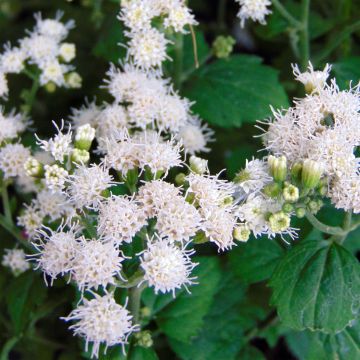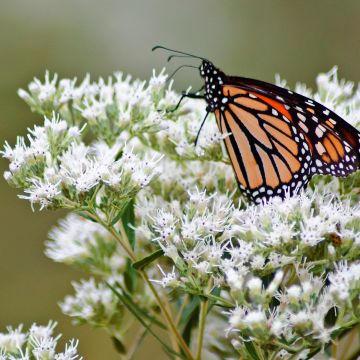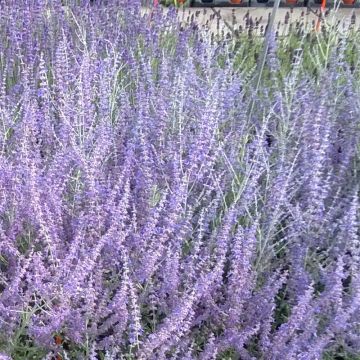

Eupatorium dubium Baby Joe
Eupatorium dubium Baby Joe
Eupatorium - Eutrochium (x) dubium Baby Joe
Special offer!
Receive a €20 voucher for any order over €90 (excluding delivery costs, credit notes, and plastic-free options)!
1- Add your favorite plants to your cart.
2- Once you have reached €90, confirm your order (you can even choose the delivery date!).
3- As soon as your order is shipped, you will receive an email containing your voucher code, valid for 3 months (90 days).
Your voucher is unique and can only be used once, for any order with a minimum value of €20, excluding delivery costs.
Can be combined with other current offers, non-divisible and non-refundable.
Home or relay delivery (depending on size and destination)
Schedule delivery date,
and select date in basket
This plant carries a 12 months recovery warranty
More information
We guarantee the quality of our plants for a full growing cycle, and will replace at our expense any plant that fails to recover under normal climatic and planting conditions.
Would this plant suit my garden?
Set up your Plantfit profile →
Description
Eupatorium dubium 'Baby Joe' is a hybrid eupatorium selection that stands out for its rather compact habit and abundant flowering in shades of pink to mauve. This perennial forms a beautiful clump of leafy stems adorned, from July to September, with large inflorescences composed of tiny flowers that are loved by bees and butterflies. It thrives in moist to wet soil and is particularly well-suited for pond borders. Its fuzzy and delicate appearance gives the garden a touch of rustic charm, and its flowers attract numerous butterflies. It is also a great flower for cutting.
The 'Baby Joe' Eupatorium is a horticultural variety discovered in Rijpwetering, Netherlands, in 2003. It is an herbaceous perennial from the aster family. It is derived, among others, from Eupatorium dubium, now renamed Eutrochium dubium. The latter is a botanical species native to eastern North America, extremely hardy, and typically found in wet areas such as sandy marshes, riverbanks, and wet thickets.
'Baby Joe' forms a dense clump of upright and sturdy, dark coloured stems reaching 60 to 90 cm in height and 40 to 50 cm in width. The stems bear very dark green leaves that are 5 to 15 cm long, elliptical, strongly veined, coarsely toothed at the edges, arranged in whorls of 3 to 4. Flowering begins in July, earlier or later depending on the climate, and continues until September. It consists of hundreds of small fluffy heads tightly packed in generous rounded corymbs or terminal clusters that can reach 15 cm in diameter. This late flowering is nectar-rich, attracting numerous pollinating insects such as bees and butterflies, precious for enhancing the garden in August and September. After pollination, the flowers produce numerous small seeds with bristles that are dispersed by the wind. Lightweight and decorative, they dry attractively for winter. All the above-ground vegetation of the plant is deciduous in winter. The leafy stems of the eupatorium reappear quite late in spring.
Eupatorium dubium 'Baby Joe' thrives in any soil that remains moist, in a sunny or slightly shaded location, and it is a nectar-rich plant. It finds a place at the edge of water features, but also in cottage flower beds in moist soil. It can be paired, for example, with bugbanes, Meadow-rues, and Goat's Beards, which are equally robust and hardy perennials that thrive in similar environments. It is also stunning in flower beds and bouquets with waterside asters.
Report an error about the product description
Flowering
Foliage
Plant habit
Botanical data
Eupatorium - Eutrochium
(x) dubium
Baby Joe
Asteraceae
Eupatorium dubium Baby Joe
Cultivar or hybrid
Other Eupatorium - Boneset
View all →Planting and care
Eupatoriums naturally thrive in moist or even damp soils, limestone or not, humus-bearing and light or more clayey and loamy. They need a certain degree of soil moisture. Choose a very sunny or slightly shaded exposure. These are hardy and sturdy plants that have few enemies. Eupatorium Baby Joe emerges quite late in the spring. It is resistant to powdery mildew, but its leaves can burn in dry soil. Prune the dry stems in the spring, when the vegetation restarts.
Planting period
Intended location
Care
This item has not been reviewed yet - be the first to leave a review about it.
Similar products
Haven't found what you were looking for?
Hardiness is the lowest winter temperature a plant can endure without suffering serious damage or even dying. However, hardiness is affected by location (a sheltered area, such as a patio), protection (winter cover) and soil type (hardiness is improved by well-drained soil).

Photo Sharing Terms & Conditions
In order to encourage gardeners to interact and share their experiences, Promesse de fleurs offers various media enabling content to be uploaded onto its Site - in particular via the ‘Photo sharing’ module.
The User agrees to refrain from:
- Posting any content that is illegal, prejudicial, insulting, racist, inciteful to hatred, revisionist, contrary to public decency, that infringes on privacy or on the privacy rights of third parties, in particular the publicity rights of persons and goods, intellectual property rights, or the right to privacy.
- Submitting content on behalf of a third party;
- Impersonate the identity of a third party and/or publish any personal information about a third party;
In general, the User undertakes to refrain from any unethical behaviour.
All Content (in particular text, comments, files, images, photos, videos, creative works, etc.), which may be subject to property or intellectual property rights, image or other private rights, shall remain the property of the User, subject to the limited rights granted by the terms of the licence granted by Promesse de fleurs as stated below. Users are at liberty to publish or not to publish such Content on the Site, notably via the ‘Photo Sharing’ facility, and accept that this Content shall be made public and freely accessible, notably on the Internet.
Users further acknowledge, undertake to have ,and guarantee that they hold all necessary rights and permissions to publish such material on the Site, in particular with regard to the legislation in force pertaining to any privacy, property, intellectual property, image, or contractual rights, or rights of any other nature. By publishing such Content on the Site, Users acknowledge accepting full liability as publishers of the Content within the meaning of the law, and grant Promesse de fleurs, free of charge, an inclusive, worldwide licence for the said Content for the entire duration of its publication, including all reproduction, representation, up/downloading, displaying, performing, transmission, and storage rights.
Users also grant permission for their name to be linked to the Content and accept that this link may not always be made available.
By engaging in posting material, Users consent to their Content becoming automatically accessible on the Internet, in particular on other sites and/or blogs and/or web pages of the Promesse de fleurs site, including in particular social pages and the Promesse de fleurs catalogue.
Users may secure the removal of entrusted content free of charge by issuing a simple request via our contact form.
The flowering period indicated on our website applies to countries and regions located in USDA zone 8 (France, the United Kingdom, Ireland, the Netherlands, etc.)
It will vary according to where you live:
- In zones 9 to 10 (Italy, Spain, Greece, etc.), flowering will occur about 2 to 4 weeks earlier.
- In zones 6 to 7 (Germany, Poland, Slovenia, and lower mountainous regions), flowering will be delayed by 2 to 3 weeks.
- In zone 5 (Central Europe, Scandinavia), blooming will be delayed by 3 to 5 weeks.
In temperate climates, pruning of spring-flowering shrubs (forsythia, spireas, etc.) should be done just after flowering.
Pruning of summer-flowering shrubs (Indian Lilac, Perovskia, etc.) can be done in winter or spring.
In cold regions as well as with frost-sensitive plants, avoid pruning too early when severe frosts may still occur.
The planting period indicated on our website applies to countries and regions located in USDA zone 8 (France, United Kingdom, Ireland, Netherlands).
It will vary according to where you live:
- In Mediterranean zones (Marseille, Madrid, Milan, etc.), autumn and winter are the best planting periods.
- In continental zones (Strasbourg, Munich, Vienna, etc.), delay planting by 2 to 3 weeks in spring and bring it forward by 2 to 4 weeks in autumn.
- In mountainous regions (the Alps, Pyrenees, Carpathians, etc.), it is best to plant in late spring (May-June) or late summer (August-September).
The harvesting period indicated on our website applies to countries and regions in USDA zone 8 (France, England, Ireland, the Netherlands).
In colder areas (Scandinavia, Poland, Austria...) fruit and vegetable harvests are likely to be delayed by 3-4 weeks.
In warmer areas (Italy, Spain, Greece, etc.), harvesting will probably take place earlier, depending on weather conditions.
The sowing periods indicated on our website apply to countries and regions within USDA Zone 8 (France, UK, Ireland, Netherlands).
In colder areas (Scandinavia, Poland, Austria...), delay any outdoor sowing by 3-4 weeks, or sow under glass.
In warmer climes (Italy, Spain, Greece, etc.), bring outdoor sowing forward by a few weeks.



















































